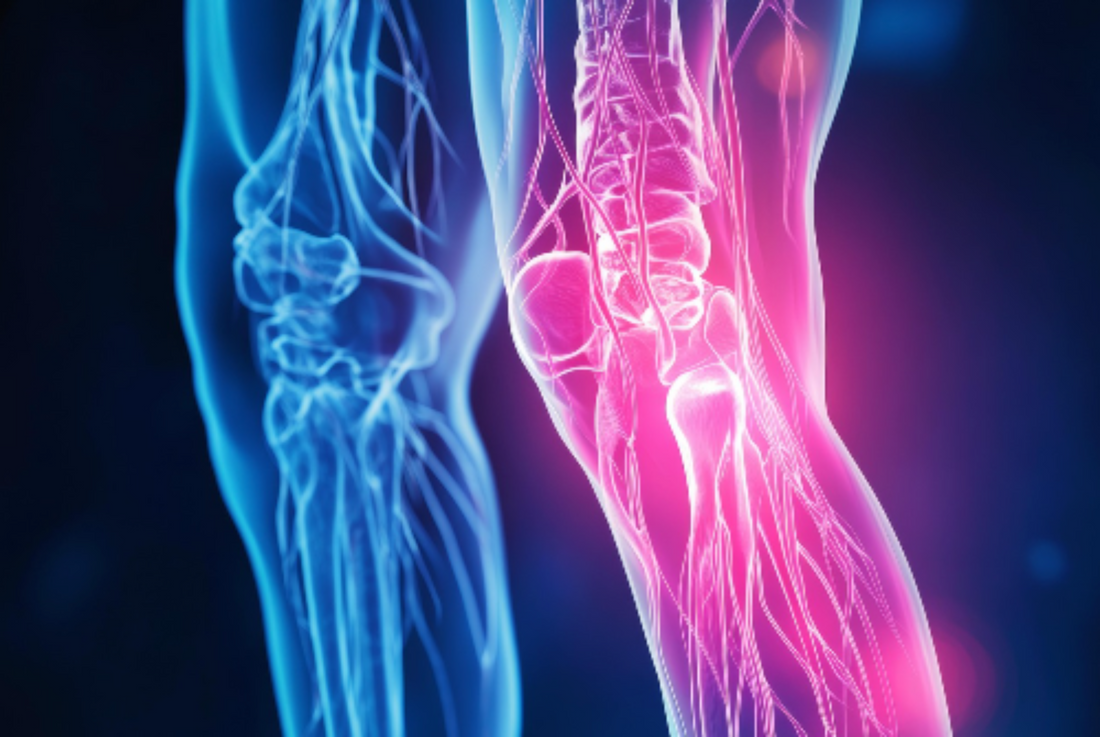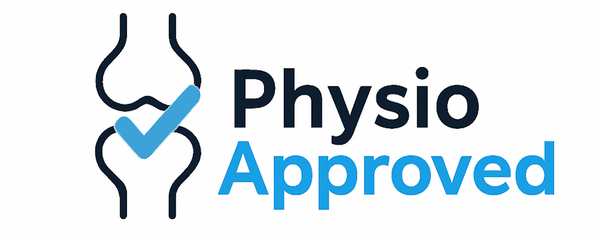
Why Does the Front of My Knee Hurt? Is It Runner’s Knee or Jumper’s Knee?
Share
Still not sure why your kneecap hurts when you're moving around? Let’s break down the two most common “Anterior” knee condition culprits, including how to tell them apart, and the smartest ways to ease the sting.
First things first: What do we mean by “Anterior” knee pain?
“Anterior” simply means front-facing. When we say anterior knee pain, we’re talking about discomfort felt around or just below the kneecap (patella).
Most front-of-knee pain in active people falls into one of three buckets:
| The Usual Suspects | Quick Snapshot | Classic Triggers |
|---|---|---|
| Patellar Tendonitis (AKA: “Jumper’s Knee”) | Over-load irritation of the patellar tendon—the strong band connecting kneecap to shinbone | Jumping, sprinting, sudden increases in training volume |
| Patellofemoral Pain Syndrome (AKA: “Runner’s Knee”) | Irritation where the kneecap meets the thigh bone (patellofemoral joint) | Running, stairs, squats, prolonged sitting with knees bent |
| Knee Osteoarthritis | Wear-and-tear of joint cartilage, usually later in life | Prolonged weight-bearing, stiffness after rest |
In this article we’ll focus on Jumper's and Runner's knee because they’re the most activity-dependent and manageable with the right plan.
1. Patellar Tendonitis (Jumper’s Knee)
What is it?
An over-use irritation of the patellar tendon. Every time you land from a jump or decelerate abruptly, that tendon stores and releases energy. Too much, too soon, and microscopic strain builds faster than it can heal.
How it feels
- Sharp or burning pain just below the kneecap
- Worst at take-off or landing, better after warming up, angry again the next morning
- May swell or feel tender to touch
Why it happens
- Sudden increase in running or jumping volume
- Hard surfaces, poor landing mechanics, weak glutes/quads
- Limited ankle or hip mobility forcing the knee to absorb extra shock
Smart fixes
- Load management – dial back high-impact sessions (not complete rest)
- Wear a Patella Strap - distribute the load on the tendon to reduce the pain
- Isometric holds (e.g 'Spanish squat' exercise) to calm pain without shrinking the muscle.
- Progressive strength – slow, heavy squats and decline single-leg squats re-condition the tendon.
- Physio-guided program – ensures load progresses safely and addresses technique.
Where a Patella Strap fits:
An adjustable strap sits across the tendon, redistributing tension so fewer stress waves hit the irritated zone. Most users notice a quick drop in pain during activity - ideal for staying active while rehab takes effect. It’s not a cure, but it’s a versatile, low-profile tool to keep you moving on quiet days, flights of stairs, or game day.

Click here to view the PhysioApproved Patella Strap
2. Patellofemoral Pain Syndrome (Runner’s Knee)
What is it?
A broad term for pain coming from the patellofemoral joint - where the kneecap glides in a shallow groove on the femur (thigh bone). The groove is the least “congruent” joint in the body, meaning the fit isn’t snug. Because of that, small changes in alignment or muscle control can irritate joint surfaces.
How it feels
- Diffuse, achy pain around or behind the kneecap
- Worse with hills, deep squats, prolonged sitting (“movie-theatre knee”)
- Occasional clicks or a grinding sensation without true locking
Why it happens
- Hip or ankle weakness causing the knee to drift inward (poor “tracking”)
- Over-striding or rapid mileage increases
- Footwear worn flat or unsuited to your mechanics
Smart fixes
- Glute and quadriceps strengthening – think side-lying clams, step-downs, Bulgarian split squats
- Gradual exposure to hills or stairs instead of abrupt programs
- Mobility work – ankle dorsiflexion and hip flexor stretches
- Physio taping or a minimalist strap for feedback and mild unloading during aggravating tasks
While a patella strap isn’t as targeted here as in true tendonitis, some runners find the gentle compression gives helpful feedback on knee alignment and reduces apprehension during squat or lunge patterns.
When should you see a Physiotherapist?
Knee swelling that doesn’t settle within 48 hours
Traumatic injury (hearing a 'pop', giving-way, immediate bruising)
Night pain or locking
You’ve already tried the basics for 6–8 weeks with no clear progress
Key take-aways
-
Identify the driver:
Tendon pain is pinpoint and load-provoked; joint pain is broader and alignment-sensitive. -
Modify, don’t hibernate:
De-load the irritant but keep moving - blood flow and strength speed recovery. -
Strength is medicine:
Targeted hip and quad work is valuable in treating both conditions. -
Consider a strap for convenient relief:
Our low-profile Patella Strap redistributes tendon load and offers gentle compression so you can finish a shift, a workout, or a weekend hike with less pain. -
Professionals are your shortcut:
A physio can fine-tune load, spot technique errors, and accelerate your comeback.
Ready to move with confidence?
If a simple, adjustable strap sounds like the nudge your knee needs, explore the PhysioApproved Patella Strap - approved by clinicians, road-tested by athletes, and slim enough to fit under work pants. Pair it with a personalised strengthening plan for the best long-term results.
